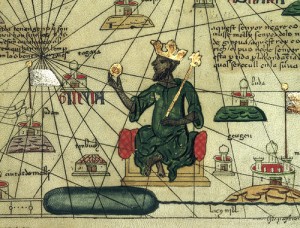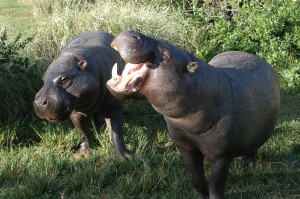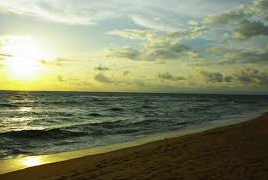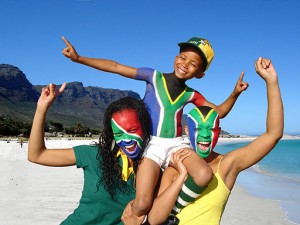Looking back into the history of Sudan and it’s great people, one can’t truly appreciate the realm and privileges of the country’s being and existence without comprehending it’s establishments and rises.. The name of the country alone represents it’s beings who inhabited the land.
 “Sudan” translated to the Arabic meaning of land of the black people. By the 6th century, the country was Christianized, then with existence dating back to c. 650, Islamization of the land arose between the eight and nineteenth century. During this time, men lived in political unity among the four-thousand mile “Valley of the Nile.” Prehistorically speaking, many evolutions of the land began extraordinarily before such era.
“Sudan” translated to the Arabic meaning of land of the black people. By the 6th century, the country was Christianized, then with existence dating back to c. 650, Islamization of the land arose between the eight and nineteenth century. During this time, men lived in political unity among the four-thousand mile “Valley of the Nile.” Prehistorically speaking, many evolutions of the land began extraordinarily before such era.
The Neolithic people first inhibited the land and survived on prehistoric materials. Living in villages of huts composed of mud and brick, conditions were less luxurious than expected. Food resulted from anything collected during hunting or fishing along the river. Grain was collected and agriculture rose for the people of the Nile river valley.
 Trade was a large aspect of the developing years of Sudan. The Egyptians would compose deals of agriculture material, such as grains, with the land of Kush for stones, incense, etc. When Egyptians began seeking a more permanent trading area, they decided for travel forts protecting the trade of gold, which was very valued to the mines in Wawat. Gold and slave trades were amongst the pharaoh’s control.
Trade was a large aspect of the developing years of Sudan. The Egyptians would compose deals of agriculture material, such as grains, with the land of Kush for stones, incense, etc. When Egyptians began seeking a more permanent trading area, they decided for travel forts protecting the trade of gold, which was very valued to the mines in Wawat. Gold and slave trades were amongst the pharaoh’s control.
 Egypt then felt more power over the area and pharaoh Ahmose arose the New Kingdom from c. 1570-1100 BC. During which time the extent of control contained Kush until the fourth cataract. The Egyptian soldiers expected devotion is exchange for respect and commitment from chiefs and kids over the pharaoh’s people.
Egypt then felt more power over the area and pharaoh Ahmose arose the New Kingdom from c. 1570-1100 BC. During which time the extent of control contained Kush until the fourth cataract. The Egyptian soldiers expected devotion is exchange for respect and commitment from chiefs and kids over the pharaoh’s people.
A language was established within the community which was used in all aspects of work, socializing, and living for the people once settled into the area. The temples of hard work and time were used for the religious worship of Christianity until diminishing after the 6th century.
Although generic information concerning the history and evolution of Sudan exist amongst the Internet in scatters, there isn’t much online or physical history to the land. I strongly believe because the history of Egypt and the Nile is so widely known and recognized, the country sitting on the other side isn’t taken into consideration or mentioned. The history was never a violent once, aside from the assumed slavery and pharaoh ruling that existed in a majority of the surrounding countries at such time. I believe although somewhat generic and peaceful, the land of Sudan be more recognized for it’s beauty and graciousness to surrounding countries and rise than be left in the dust as such.


 wonder where those pretty little diamonds on television commercials and celebrity ring fingers come from? I know I have! The fact is that it is extremely likely this beautiful rock comes from mines in Sierra Leone. Sierra Leone is a small beautiful country with a lot of history located right on the cost of West Africa. With warm untouched beaches on Bonthe Island or Sherborough Island right off its coast, there is no place else you’d want to be! Do you love animals? Come to Sierra Leone and visit the Gola Forest National Park and see the wide selection of species! The Gola Forest National Park is home to animals such as the endangered West African elephant, the western chimpanzee and many bird species. And for those looking to enhance your Middle Eastern experience, how about hiking the highest peak in West Africa? Mount Bintumani and the Loma Mountains is home to the Lowland Western chimpanzee and is filled with ancient history! Many of you are probably interested in the culture of Sierra Leone. Not a problem! The best way to experience the culture of Sierra Leone is by visiting one of its villages. Tourists love the small village of Rogbonko and so will you. Come get immersed in the Sierra Leonean culture and enjoy an experience of a lifetime! I can’t stress what an important figure in the world’s history this small country holds. Sierra Leone was home to many slave trade transactions between the western and eastern worlds. Just a boat trip from Sierra Leone to Bunce Island, be a witness to one the world’s first stations of this nonsensical practice that occurred in the 18th and 19th centuries. Do you just want to relax and enjoy the sun? Why not visit Sulima a beach town located right of the Liberian coast near Sierra Leone! Enjoy the popular Liberian ‘Club Beer’ while taking a swim in the ocean. Recently speaking of diamonds, Sulima is home to one of the world’s oldest mining companies! Another park tourists can enjoy is located in the northern part of the country. Outamba-Kilimi National Park is home to animals such as elephants, chimpanzees and even pigmy hippos!
wonder where those pretty little diamonds on television commercials and celebrity ring fingers come from? I know I have! The fact is that it is extremely likely this beautiful rock comes from mines in Sierra Leone. Sierra Leone is a small beautiful country with a lot of history located right on the cost of West Africa. With warm untouched beaches on Bonthe Island or Sherborough Island right off its coast, there is no place else you’d want to be! Do you love animals? Come to Sierra Leone and visit the Gola Forest National Park and see the wide selection of species! The Gola Forest National Park is home to animals such as the endangered West African elephant, the western chimpanzee and many bird species. And for those looking to enhance your Middle Eastern experience, how about hiking the highest peak in West Africa? Mount Bintumani and the Loma Mountains is home to the Lowland Western chimpanzee and is filled with ancient history! Many of you are probably interested in the culture of Sierra Leone. Not a problem! The best way to experience the culture of Sierra Leone is by visiting one of its villages. Tourists love the small village of Rogbonko and so will you. Come get immersed in the Sierra Leonean culture and enjoy an experience of a lifetime! I can’t stress what an important figure in the world’s history this small country holds. Sierra Leone was home to many slave trade transactions between the western and eastern worlds. Just a boat trip from Sierra Leone to Bunce Island, be a witness to one the world’s first stations of this nonsensical practice that occurred in the 18th and 19th centuries. Do you just want to relax and enjoy the sun? Why not visit Sulima a beach town located right of the Liberian coast near Sierra Leone! Enjoy the popular Liberian ‘Club Beer’ while taking a swim in the ocean. Recently speaking of diamonds, Sulima is home to one of the world’s oldest mining companies! Another park tourists can enjoy is located in the northern part of the country. Outamba-Kilimi National Park is home to animals such as elephants, chimpanzees and even pigmy hippos! 


 For the more adventurous folks, there is the option to travel through the papyrus swamps with a motorboat which is a louder and more interactive alternative. With this option tourist have the option to interact with bigger animals such as elephants, hippos and buffalo. The dryer safaris offer game such as lions, hyenas, leopard’s cheetahs and wilddog. Tourist also have opportunities to play interact with the loveable meerkats and make new friends.
For the more adventurous folks, there is the option to travel through the papyrus swamps with a motorboat which is a louder and more interactive alternative. With this option tourist have the option to interact with bigger animals such as elephants, hippos and buffalo. The dryer safaris offer game such as lions, hyenas, leopard’s cheetahs and wilddog. Tourist also have opportunities to play interact with the loveable meerkats and make new friends.















